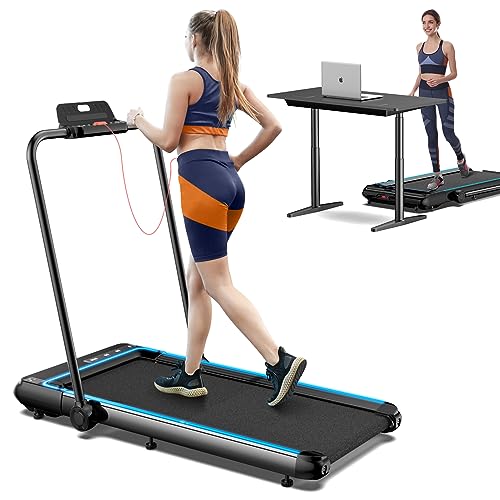Tread Mill 10 Things I'd Like To Have Known Earlier

Treadmills: A Comprehensive Guide to Understanding Their Functionality, Benefits, and Appropriate Selection
Introduction
Treadmills have ended up being a staple in contemporary fitness routines, both in homes and fitness centers worldwide. They offer a convenient and effective way to maintain cardiovascular health, boost endurance, and help in weight management. This article explores the different kinds of treadmills, their benefits, features to consider when buying, and some FAQs to guide users in making informed decisions.
Types of Treadmills
When it pertains to picking a treadmill, it is important to understand the different types available in the market. Here are the main categories:
1. Manual Treadmills
- System: These treadmills have a basic style and depend on the user's efforts to move the belt.
- Pros: More budget-friendly, quieter operation, no electrical power required.
- Cons: Limited features, might not provide the very same variety of exercise strength.
2. Motorized Treadmills
- System: Powered by a motor that drives the belt, allowing users to walk or perform at a set rate.
- Pros: Greater variety of speeds and slopes, geared up with numerous functions such as heart rate displays and exercise programs.
- Cons: More pricey and might require more maintenance.
3. Folding Treadmills
- System: Designed for those with limited space, these treadmills can be folded for easy storage.
- Pros: Space-saving, frequently motorized, flexible features.
- Cons: May be less durable than non-folding models.
4. Industrial Treadmills
- Mechanism: High-quality machines designed for usage in gyms and gym.
- Pros: Built to stand up to heavy usage, advanced functions, often consist of service warranties.
- Cons: Pricey and not perfect for home use due to size.
5. Curved Treadmills
- System: An unique style that enables users to move the belt utilizing their own energy.
- Pros: Offers a more natural running experience, promotes better running type.
- Cons: More costly and can be noisier.
| Treadmill Type | Pros | Cons |
|---|---|---|
| Handbook | Economical, no electrical power needed | Minimal features |
| Motorized | Range of speeds, advanced features | Maintenance needed |
| Folding | Space-saving, typically motorized | May do not have sturdiness |
| Commercial | Developed to last, professional-grade functions | Pricey |
| Curved | Natural running experience, promotes great kind | Greater price |
Advantages of Using Treadmills
Treadmills provide numerous advantages that can add to one's general health and wellness goals. Some of these advantages consist of:
- Convenient Workouts: Treadmills enable users to work out inside your home regardless of weather.
- Cardiovascular Health: Regular usage can improve heart health by increasing stamina and promoting healthy flow.
- Weight Management: Effective for burning calories, which assists in weight-loss and management.
- Adjustable Workouts: Users can control speed, slope, and duration to develop customized exercise experiences.
- Security: Treadmills provide a predictable surface, reducing the danger of falls compared to outside running.
- Multifunctional: Many treadmills included features like heart rate screens, exercise programs, and even home entertainment systems.
Choosing the Right Treadmill
When picking a treadmill, potential purchasers need to think about a number of crucial factors:
Features to Consider:
- Motor Power: Typically measured in horsepower (HP), a motor strength of at least 2.5 HP is suggested for major runners.
- Belt Size: A longer and larger belt accommodates various stride lengths, providing convenience during exercises.
- Incline Settings: Adjustable slope features replicate outside hill running and can increase exercise intensity.
- Weight Capacity: Ensure the treadmill can support the user's weight for safety and longevity.
- Console Features: Look for user-friendly dashboards, workout programs, and Bluetooth compatibility for streaming music or other functions.
Spending plan Considerations
- Under ₤ 500: Entry-level manual treadmills ideal for casual walkers.
- ₤ 500 - ₤ 1,500: Mid-range motorized treadmills that use more functions and much better durability.
- ₤ 1,500 - ₤ 3,000: High-end designs with sophisticated technology, larger motors, and longer guarantees.
- Over ₤ 3,000: Commercial-grade treadmills perfect for frequent use in fitness centers or training facilities.
Frequently Asked Questions (FAQs)
1. How frequently should I use a treadmill?
It is suggested to utilize a treadmill at least three to five times a week, including different strength levels for best outcomes.
2. Can I drop weight by using a treadmill?
Yes, constant use of a treadmill can contribute to weight loss, especially when combined with a balanced diet and strength training.
3. What is the very best speed to walk on a treadmill for newbies?
A speed of 3 to 4 miles per hour is an appropriate range for newbies. It's important to start slow and gradually increase rate as convenience and stamina enhance.
4. Do I need to use a treadmill if I already run outdoors?
Utilizing a treadmill can supply extra advantages, such as controlled environments and differed workouts (slope, intervals) that are not always possible outdoors.
5. How do I maintain my treadmill?
Regular upkeep consists of lubricating the belt, cleaning up the deck and console, and checking the motor for optimal performance.
Treadmills are necessary tools for those seeking to boost their fitness levels in a controlled and convenient manner. With different types readily available, understanding their features and benefits is essential for making a notified purchase. By thinking about individual workout requirements, area availability, and budget restraints, people can find the most ideal treadmill that fits their way of life. Integrating just click the next webpage into a well balanced fitness routine can cause improved health outcomes and an enjoyable exercise experience.

